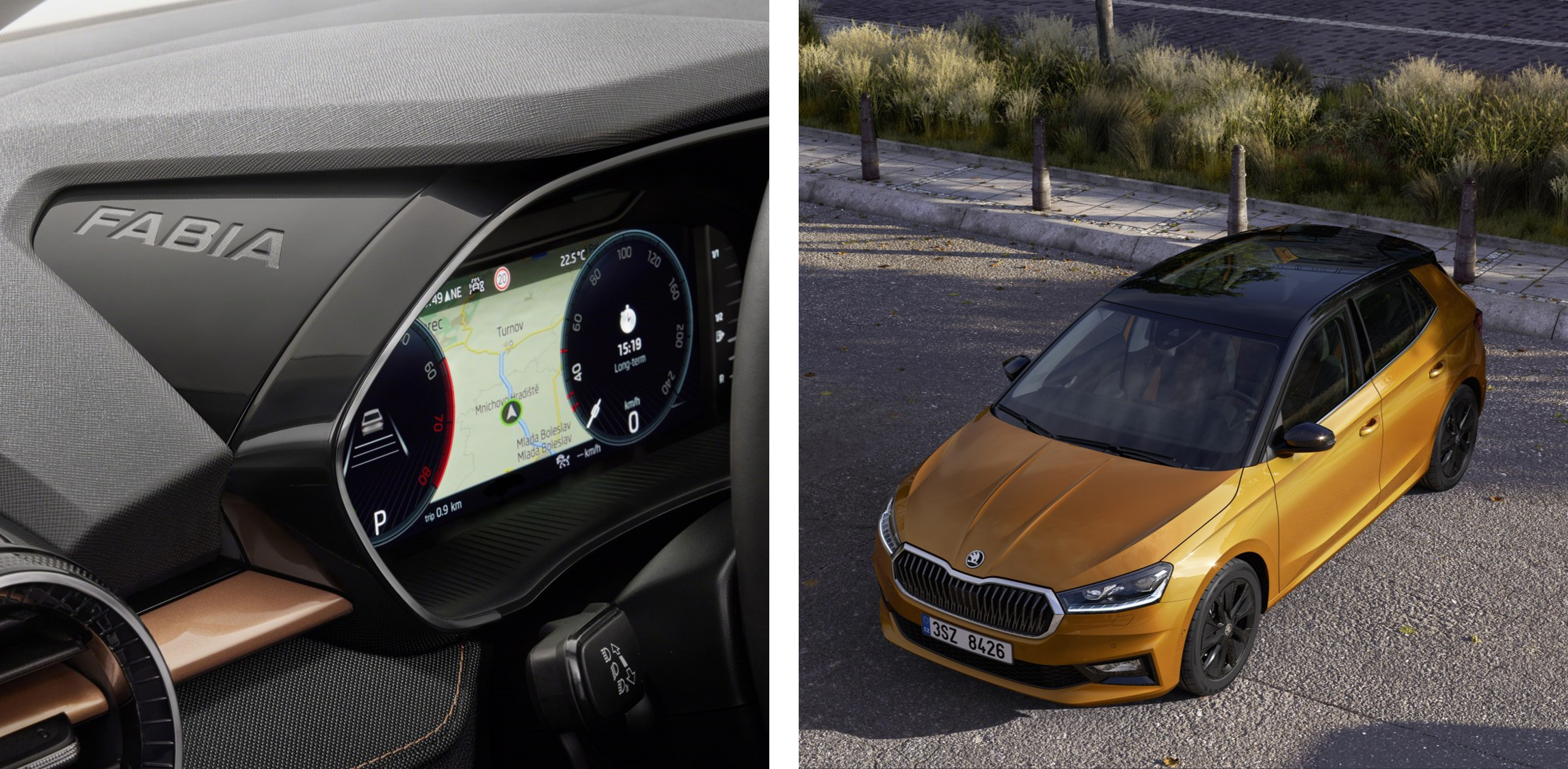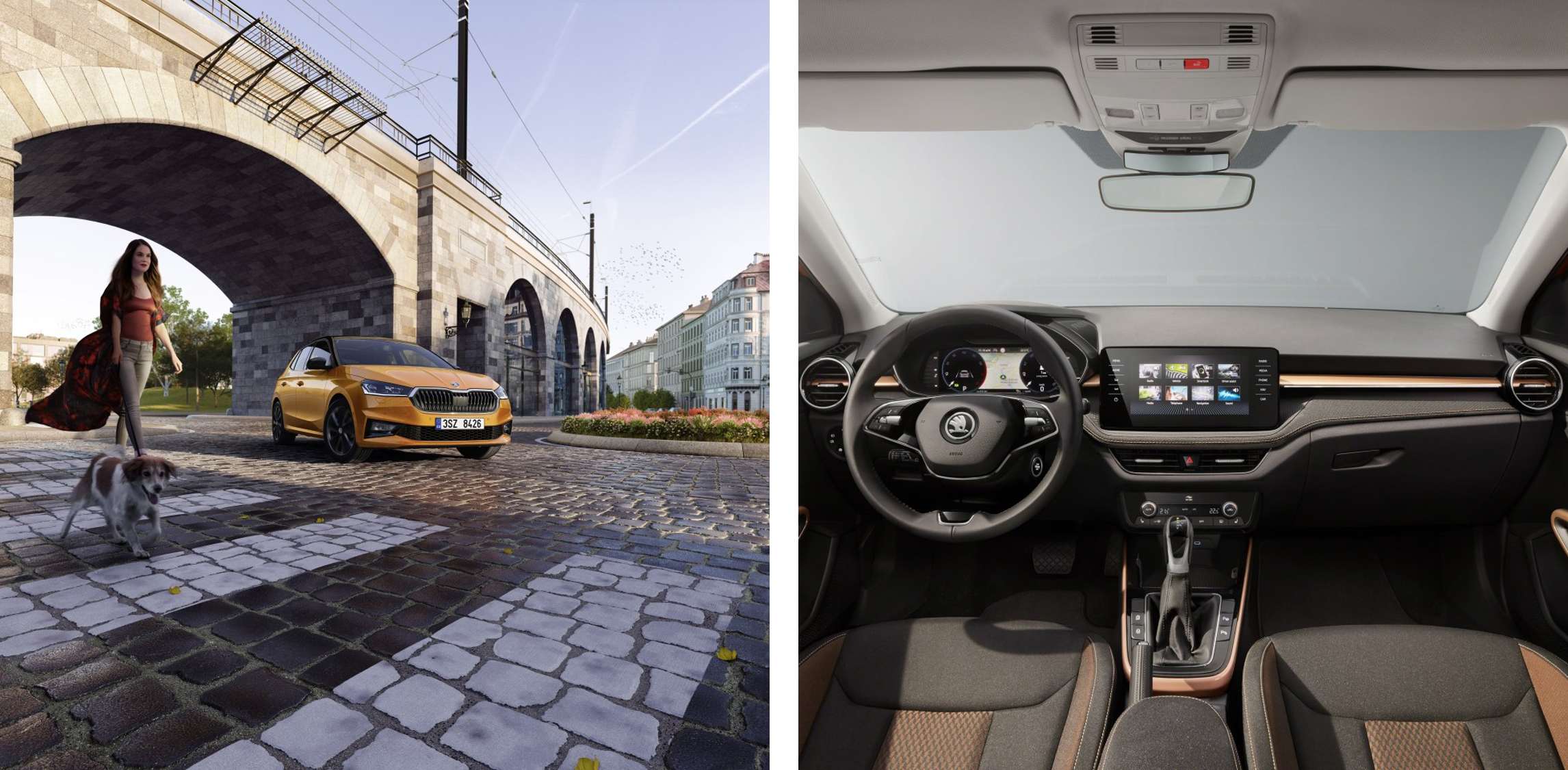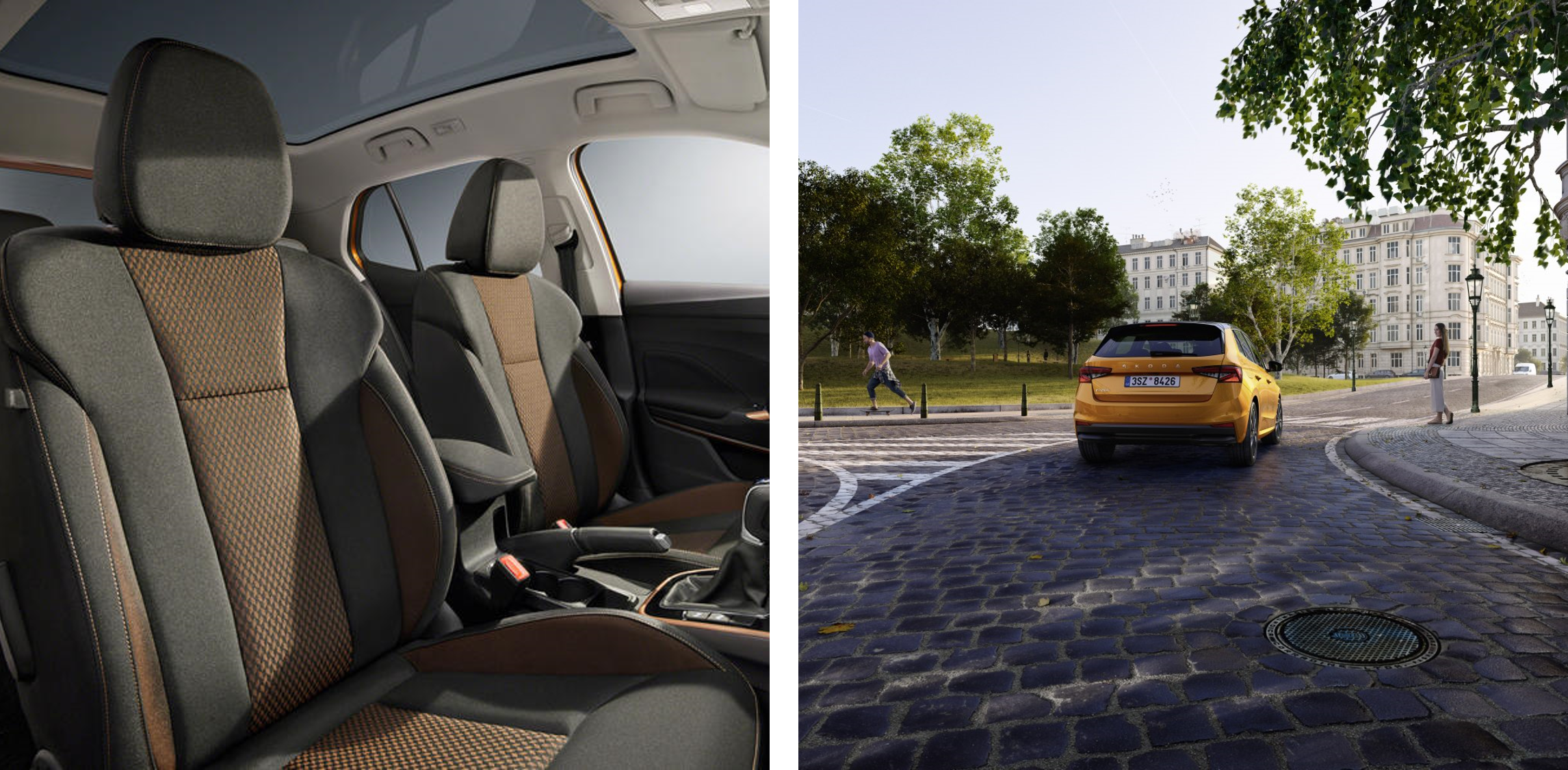Small car, cult status: the all-new FABIA 2021
Focusing on the exterior, the height remains the same but the length and width have increased, giving the FABIA a more dynamic appearance. The triangular shape on the front doors is a nod to the wedge segment of the Czech national flag and a first for the FABIA is the option of Full LED lights. The basic option on the FABIA is 14” or 15” steel wheels, but up to 18” rims are available as an option. In the Proxima and Procyon designs, the rims have special plastic fills that both enhance the design and help control airflow around the wheels and improve the aerodynamics of the vehicle.
Compared to previous generations, this FABIA is 111 millimetres longer and 48 millimetres wider. These numbers mean that the new FABIA is considerably more spacious than the previous versions, with more room for both occupants and their luggage. The boot has been enlarged by 50 litres to reach a segment-topping 380 litres, and folding down the back seats gives a total of 1,190 litres of practical space.

The interior is now also quieter thanks to improved sound insulation. It also includes new materials and design features usually only found in higher segment cars, for the first time ever, the FABIA offers its occupants two-zone air-conditioning and air-con outlets on the rear of the centre console for passengers in the back. Other new options include a heated steering wheel and a heated windscreen.
The new FABIA has also been given a modern infotainment system with an always-online connection and numerous ŠKODA Connect services. The basic infotainment system is called Swing and comes with a 6.5” touchscreen display and DAB radio; the more advanced Bolero has an 8” display, Bluetooth connectivity and smartphone connection for the use of Wireless SmartLink, Android Auto and Apple CarPlay. Another option is PhoneBox, which lets you wirelessly charge your mobile phone. The top-of-the-range infotainment system is Amundsen, which has a 9.2” touchscreen display, gesture control and voice control via Laura, the voice assistance system that speaks fifteen languages. You can even opt for the Virtual Cockpit digital instrument panel with the new FABIA.

The model has achieved a five-star rating in Euro NCAP tests thanks to its safety technology such as Travel Assist, Park Assist, adaptive cruise control, Lane Assist and Side Assist, and it can have up to nine airbags.
The Simply Clever features make better use of space inside the vehicle. Details like the parking card or payment cardholder and elastic penholder help keep the car’s interior neat and tidy, while the new optional removable drink holder provides convenience and flexibility. Backseat passengers can make use of a new optional storage box that fits between the centre tunnel and rear seats. Plus there is a system for keeping the luggage compartment tidier and an optional sunshade for the sunroof which can be stored away under the floor of the luggage compartment. Other features include the bag beneath the luggage compartment floor that can be used for storing clothes, practical phone pockets on the back of the front seats, an optional USB-C connector on the interior rear-view mirror can be used to connect a dashcam; or the foldable front passenger seat that lets you transport long items.

Four of the powertrains feature one-litre, three-cylinder engines, two of them are MPI. The basic MPI engine has a power output of 48 kW, while its more powerful brother delivers 59 kW. The 1.0 TSI engines deliver 70 and 95 kW. The standard transmission is a manual gearbox. Only the most powerful three-cylinder engine has a six-speed gearbox or the optional seven-speed DSG automatic transmission. That DSG automatic transmission comes as standard with the model’s most powerful engine, the four-cylinder 1.5 TSI giving 110 kW and offering cylinder deactivation for reducing fuel consumption.
The new FABIA has improved fuel consumption, the three-cylinder engines can boast 900 kilometres on one tank (WLTP cycle). That’s also because the standard 40 litre tank can be replaced with a 50 litre one, which opens up lots of interesting possibilities in combination with the 1.5 TSI and its fuel consumption of 5.6 litres per 100 kilometres. With the other engines, fuel consumption ranges from 5.0 to 5.5 litres per 100 kilometres.